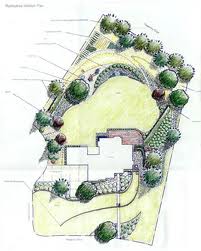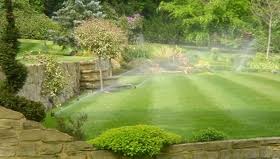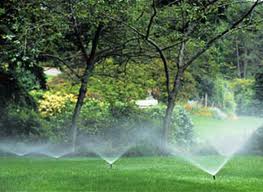No landscape or garden is complete without a proper irrigation design system. A certain amount of planning is required to implement a cost event system and contribute to water conservation initiatives.
Today most everyone has jumped on the green bandwagon, trying to further conservation efforts to decrease their footprint on our planet.
Garden enthusiasts can make a considerable mark by planning an irrigation system that supports green initiatives. What are some tips on irrigation design that will help you conserve water?
Necessary Equipment for Irrigation Design
With various products, equipment, and accessories, it may be hard to decide where to start. There are several factors to consider before you get started.
These factors include the type of plants and greenery you are nursing, whether vegetable plants, grass, shrubs, hedges, or flowering plants. Each of these types of plants has sub-categories, and these subcategories have specific irrigation needs.
For example, shrubs and hedges are resilient and do not require much water, while certain perennials require a considerable amount of sunlight and water. Knowing the plants in your garden or part of your landscape will contribute to designing the perfect type of irrigation system.
Irrigation Design and Methods
The first step to proper irrigation design is mapping out your garden or patch of greenery. Making a simple diagram of where your plants are and the types of plants there will help you design a system that will provide the most efficient coverage and contribute to lush green and healthy plant growth.
Once you’ve completed your diagram, you will be more equipped to decide on the best irrigation design because of this visual aid. A visual aid of your area will help position tubing or piping and determine the amount of water flow required to cover your area effectively.

After accomplishing this part of the planning stage, it’s time to move onto the next phase, which includes weighing the benefits and disadvantages of a drip irrigation design versus a traditional sprinkler system.
While both systems have advantages and disadvantages, the decision really lies in the individual needs of your green space.
Smaller gardens and landscape areas, for example, may be better suited for a drip irrigation system because the flow will be more concentrated directly at the root system creating a more moisture-rich environment that produces lush greenery.
In contrast, a larger area would do well with irrigation using the modified traditional sprinkler system to distribute a misting spray that provides a dew-like effect saturating the needed areas with minimal water waste. Whatever the case may be, both systems are equally as effective depending on your needs.
So remember, taking an inventory of your garden or landscape area and researching your options will provide you with the best direction for designing an irrigation system that is environmentally friendly with the right and useful irrigation design.
How Garden Irrigation Systems Promote Water Conservation?
For many of us, a garden irrigation systems consist of a garden hose that we manually wheel around, sprinkling as many plants as we can get and saturating our garden indiscriminately until we finally either tire under the weight of the water-filled hose or the blazing summer sun.
Some of us that are a little more sophisticated employ a drip irrigation system to irrigate our garden. But we’ve all driven by those lawns that are saturated to the point of complete submersion, leaking water in the street and onto the sidewalks. Well, let’s consider the advantages and disadvantages of each of those irrigation systems.
Traditional Garden Irrigation Systems
The first garden irrigation system that we’ve mentioned is the traditional sprinkler system. If you have the patience and know-how to install the piping, sprinkler heads, and timer, then you’re doing great. This system can be both cost-effective and contribute to water conservation if used the right way.
What is the right way? Well, leaving your sprinkler system on to run at non-determined times until the garden is so saturated that the soil resembles a soup is definitely not the way to conserve water.
It can also contribute to diseases experienced by plants receiving an overabundance of moisture to their rootstock. For this method to work toward water conservation initiatives, you need to set your timer to water at precise times when the chance of evaporation is lower, meaning later on in the day when the sun is not so hot.
Also, it means placing the sprinkler heads in strategic places to sufficiently cover the garden while adjusting the heads so that the water comes out in a fine mist that will create a dew-like effect.
Drip Garden Irrigation Systems

The drip garden irrigation system is designed to sufficiently deliver water only to a plant rootstock through a vented irrigation line that runs through your garden and trickles little drips of water slowly into the soil at just the right spot.
The potential for water conservation is extremely evident in this method of water delivery. This method makes water conservation easy and more efficient because it only delivers the water where it needs to go.
Because the holes in the tubing are so close to the ground, there is little chance of evaporation as the water is delivered right to the source, so to speak. There is less waste because of a better delivery system.
Whatever garden irrigation system that you choose should be based on the needs of your garden. You can use each method to conserve water.
The former method requires a little ingenuity, forethought, and planning to conserve water, but it is possible. Water conservation is a responsibility of us all. Therefore, installing garden irrigation systems should be taken into consideration seriously.
How do I Properly Install a Lawn Irrigation System?
Installing a traditional lawn irrigation system need not be a daunting task if only instructions are followed. The steps are planned carefully to ensure that you are setting up your system to the specifications of your particular garden or lawn.
The key is planning. If you take the time, in the beginning, to ensure that all of your specifications are met, you will have an easier time in the end when the actual application is made, and your system is engaged.
Modern Lawn Irrigation System
There is nothing more frustrating than completing a project only to find out that something is wrong with the installation and it doesn’t work. More often than not, this failure can be attributed to a lack of proper planning.
To avoid this, the first step, therefore, in installing your new lawn irrigation system should be to make a visual map of your space. That’s right, get out your pencil and make a sketch of your area with figures that represent the plants to show placement.
This visual aid will make it far easier to design your system, concentrating the water flow in the areas that need it most. Be sure to make a note of any potential obstructions to a clear line to the faucet so that you can compensate for these without having to dig new holes. As you will see, planning also helps to eliminate having to redo any steps later.
After your drawing is complete, you can move on to testing your water pressure and flow rate. Why is this important?
Well, knowing your water pressure and the flow rate is important in choosing the correct sprinkler heads that will pump an adequate amount of water to satisfy the needs of your plants while conserving as much water as possible.
The third step is to arrange your spray patterns. The spray patterns are the directional pattern in which the sprinkler heads will be arranged in the yard. This arrangement would include the type of sprinkler heads you will need to provide the optimum coverage and the number of heads required.
It would be a smart idea to allow for at least a 50% overlap of each head to ensure that the essential parts of your lawn are covered.

The fourth step is to make a list of all the supplies that you will need. Make sure that your list is as complete as possible to avoid making multiple trips to the home improvement store. Be sure to make a list of any questions you have to address with an expert at the store.
When your store adventure is over and you have all equipment in hand, create a test model of your layout to ensure that you have all the piping you need before digging.
The Piping of Lawn Irrigation System
When you are satisfied that all the piping is there, dig your trenches approximately 4 inches wide and 8 to 10 inches deep. Fit the pipes together and glue them in place with an easy brush application primer.
When the glue is set, attach the pipe to the water supply, attach the risers to ensure proper positioning, flush the system, ensure no obstructions, and attach the sprinkler heads.
If you figured in a controller for your system, you would install and program it to ensure that the cycles correspond with any water restrictions observed in your community.
The final step is to test your lawn irrigation system listening carefully for any unsecured pipe and observing to ensure that the water flow is even and covering the areas requiring moisture.
Although this is a very intricate process, it can be made considerably simpler by planning. If you plan from the start, you will finish faster. The results will be successful, and you will have a wonderful lawn irrigation system.
Read also: Landscaping Services for Commercial Sites
Drip Irrigation is one of the New Irrigation Methods
Drip irrigation is best used for irrigating vegetable and fruit crops because the ventilated piping can be placed between the furrows of the crops or event submerged under the earth along the root line to deliver a steady drip or trickle of water right to the source.
Either way, most water is absorbed directly into the root source, and evaporation is virtually eliminated. This irrigation method saves over a fourth of water and is relatively cheap compared to other similar systems.
The traditional spray irrigation method is the preferred method for exhaustive fruit groves because it covers more areas. One prevalent spray system is the center-pivot system. This system works much as the traditional spray irrigation system would work in a backyard.
Metal frames hold the water tubes, which end in a water gun that sprays water over the lawn in concentrated bursts. The oscillating head provides even coverage of the area.
The only drawback is that the potential for water waste is considerable. However, there is a way to customize the spray using a misting spray that will create more of a rain forest dew effect that will waste less water.
Overall this method requires more machinery to power it than the drip method, but it seems to be a favorite of modern farmers among other irrigation methods.
Read also:
- Landscaping for Ecology
- Don’t Let Home Landscaping Hurt Your Property Value

I like how you mentioned that making a diagram of where the plants are in the garden will help you design an efficient coverage. My wife and I recently moved and we want to get the best irrigation system for our gardening hobby. I’ll be sure to let her know that we should make a diagram to help design our garden and irrigation system.